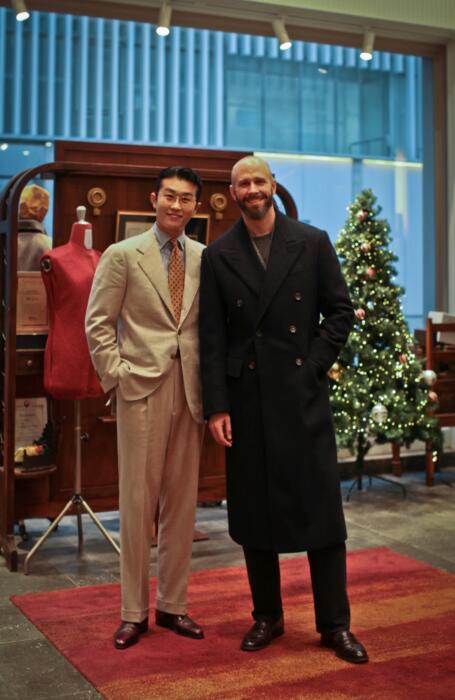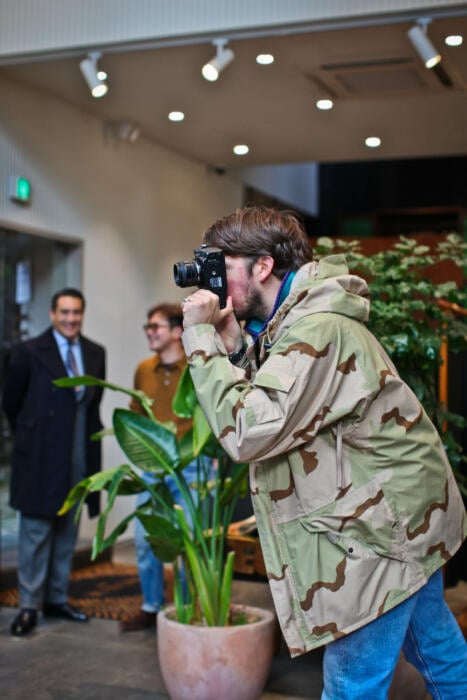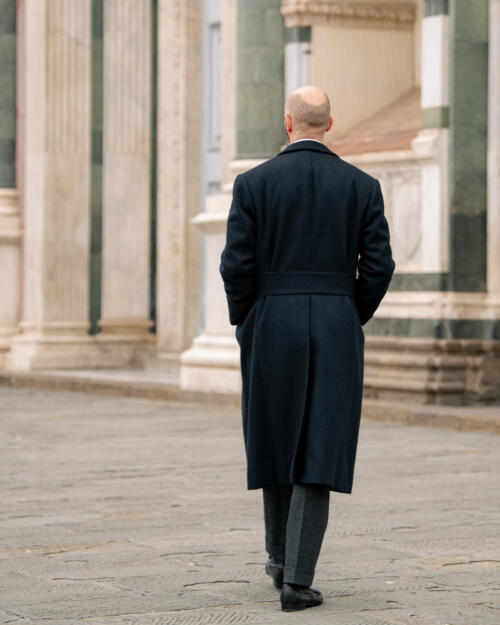
We covered the Korean outfit B&Tailor in some detail here at the beginning of the month. For details on them, their history and their style, please read that article.
It might seem a little odd splitting things up like this, but I find it makes for a more functional archive. New commissions get their own piece – branching off from the original background article – and it creates a well-structured, consistent resource. As with everything else on PS, the hope is it will be useful for many years to come.
Now, on with the review.
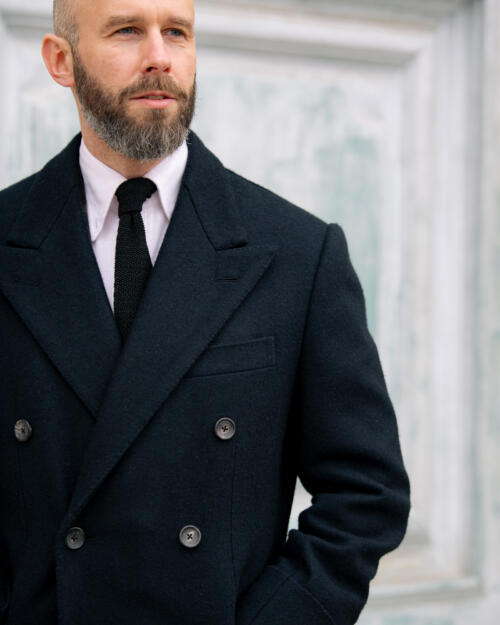
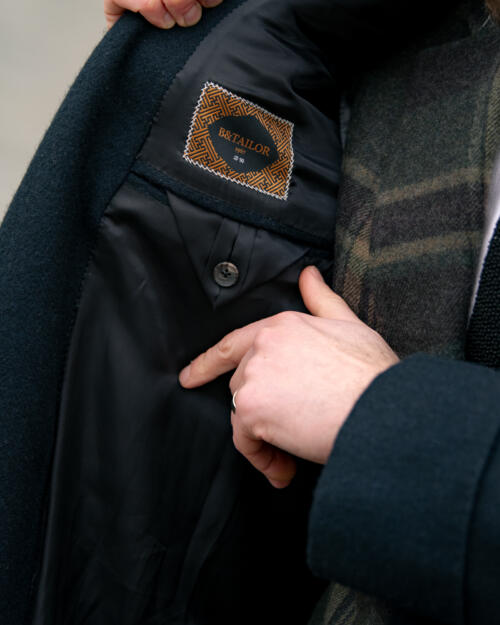
There was a moment when I picked up this coat on the morning of my last day in Korea last year. I slipped it on, buttoned it up, and a smile spread across my face.
“I could see immediately you liked it, it was such a relief!” Sam Ahn told me later (the cloth agent who had helped organise the trip).
It was true. I did, I really did. It felt easy and comfortable, yet elegant and stylish. The line of the lapels and the silhouette were flattering. When I popped the collar it sat perfectly – framing the face and not collapsing outwards or poking the chin. Just perfect.
It was satisfying, as clothes made very well for you often are. It was exciting, as I was immediately looking forward to wearing it. And it was a relief, as the whole thing had been done in a week and it had seemed uncertain how it would turn out.
That was all contained in that smile.
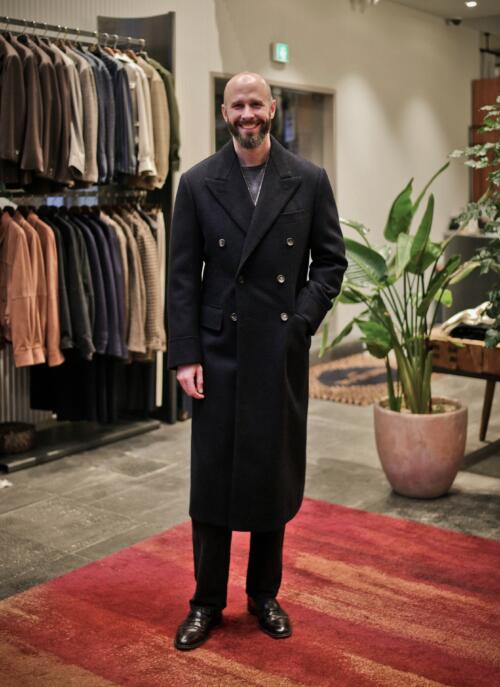
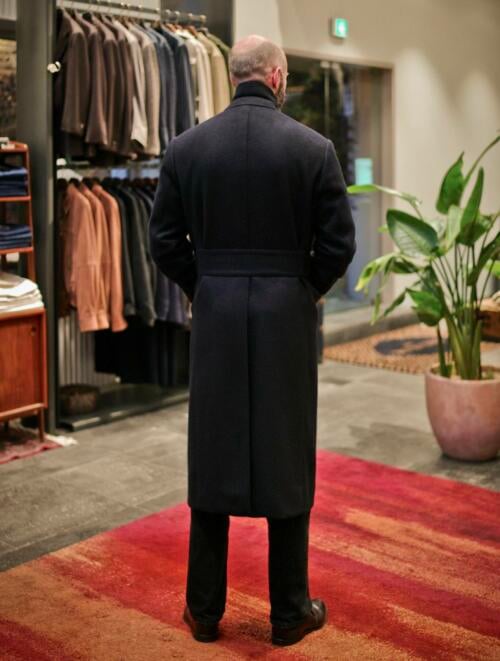
The impression has only deepened since. The coat is cut quite wide in the shoulders – definitely the width to go over a B&Tailor already-wide-shouldered jacket – but it doesn’t feel too big. (There always a balance there, cutting it for different things worn underneath, as discussed here.)
Perhaps that impression will mellow. There is always a bit of an afterglow with a commission that has worked out well, and right now this seems perfect. Although, I have been wearing it since December and haven’t changed my view on anything, except that I mildly prefer the Fox cloth used here to this one.
I wore the coat most days at Pitti back in January – on the plane, carefully folded in the rack above; walking during the day, often folded over my arm; and in the evening wrapped up tightly against the cold.
That also meant wearing it with a range of outfits. Over a suit and tie, over a jacket and flannels, and over a knit and jeans. It did well with all of them.
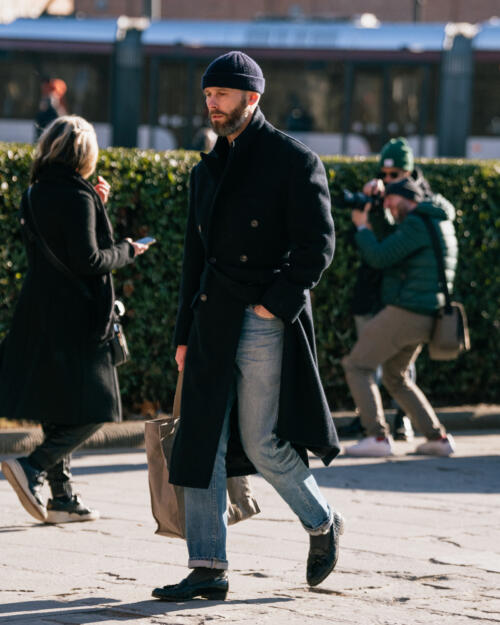
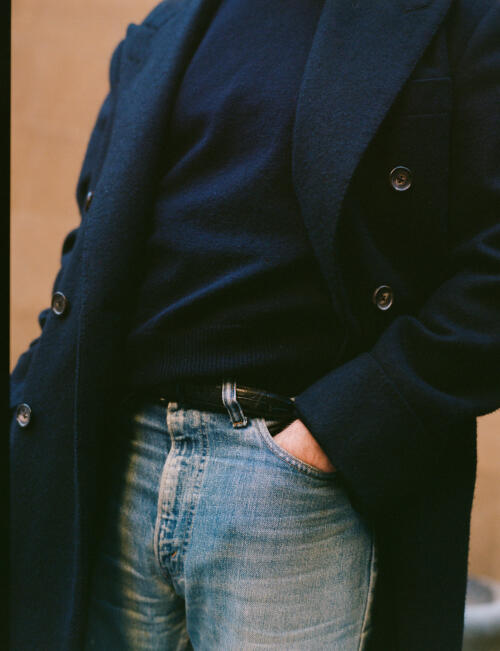
In our recent article on Cifonelli there was some discussion about wearing a navy double-breasted coat casually, for example with jeans.
This is definitely harder to do than one with in a more casual colour, pattern, material, style and breast number. A single-breasted, raglan, tweedy, brownish herringbone would be easier and more versatile.
Although all these attributes don’t necessarily have the same effect – a navy single-breasted coat is arguably a worse match. There’s something about a DB that ups the ante, that makes it more of a deliberate style, and easier to wear with in a more contrasting way as a result.
But in any case, all we’re saying with that list is that those various attributes make a coat more versatile with casual clothing – not that they’re the only option. If you’re buying just one good coat, versatility should be a big factor. But if you have more than one to play with, a navy DB with jeans can be great – as here, with light-blue denim, then all navy and black elsewhere, simple and tonal.
(We’ll cover black shoes with jeans in another post, otherwise this one will get too far off topic.)
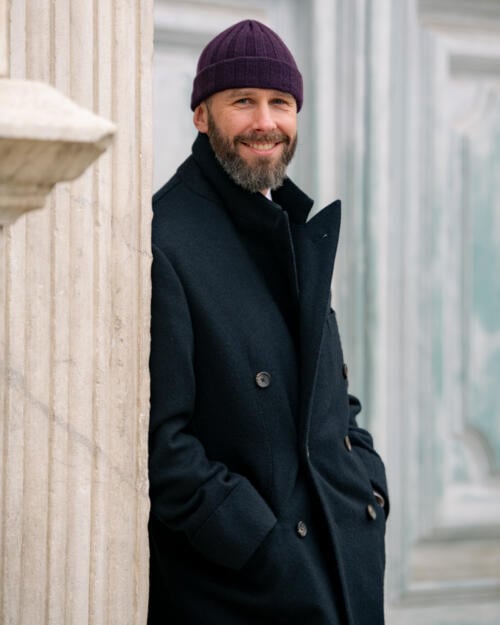
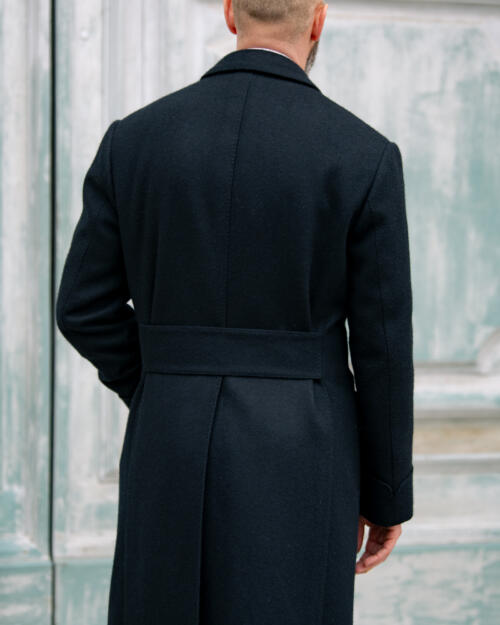
In the context of our recent series analysing overcoats, it’s interesting how simply the B&Tailor is made. There are no pleats in the back, unlike Ciardi, Liverano or Cifonelli; there’s just a central seam, running down into a pleat beneath the belt.
But there’s still a lot of excess material in the back, gathered into that belt, as you can see in the various images. This really makes the back look dramatic (it helps that it’s cut larger anyway, as with the shoulders). The fact the belt is wider (8cm compared to 6-7cm on the others) also gives it a little character.
I can see quite a few readers preferring more styling elements, like a central box pleat, side pleats, buttons on the belt and a buttoned vent (all of which B&Tailor can do). But I also like this simpler direction; certainly, I would stop short of buttons on the belt, which seems to be the point where it becomes overkill. A bit menswear 2010.
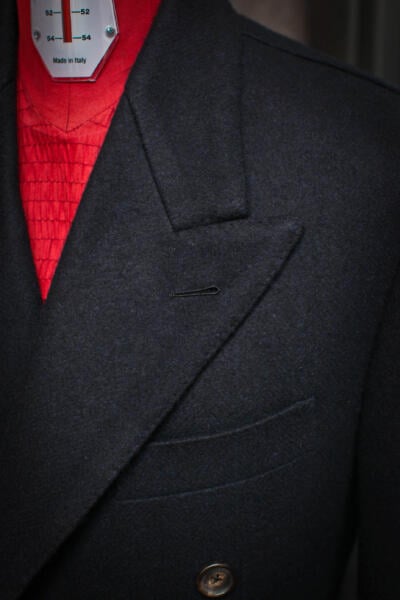
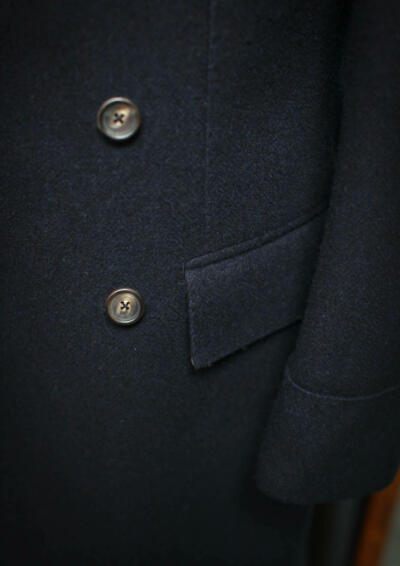
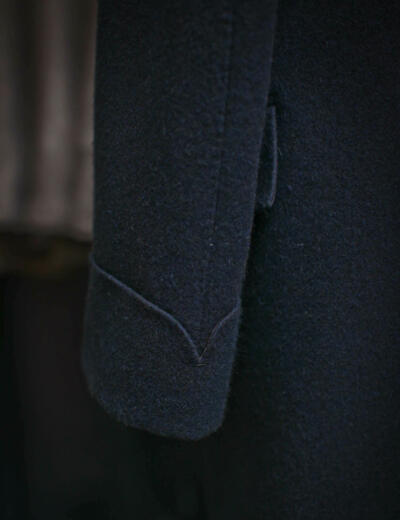
The make on the coat in general is very good. You can see how precise the buttonholes are in the images above, and as we talked about in our recent piece on Korean tailoring generally, that’s something that has really improved in the past decade.
The top stitching on the edges is neat, the lining inside is finished well, and there are nice details like the tiny tack stitch on the turn-back cuff. It’s pretty much the level of English tailors and better than most Neapolitans.
The cloth is CT10, a Fox Brothers merino overcoating weighing 24/25oz. I really like the weight, but marginally prefer the set (density) of the CT12 I used for my Ettore coat. Because that’s a tad looser, you see more of the herringbone and the flannel finish is a little less fluffy. The downside is that CT12 is lighter at 20/21oz.
I should make clear, by the way, that I would in no way suggest a reader should have so many DB navy coats! I went for one here because I thought it would best suit the style I liked from B&Tailor, which its mix of vintage and modern formality. And covering the tailor the best way is always the priority when covering a first commission on PS.
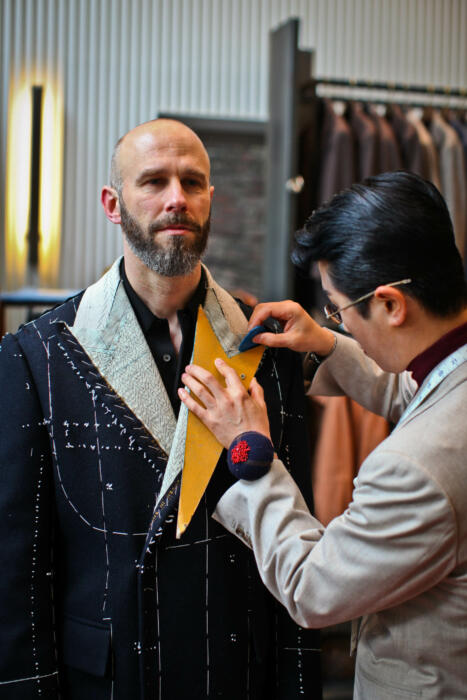
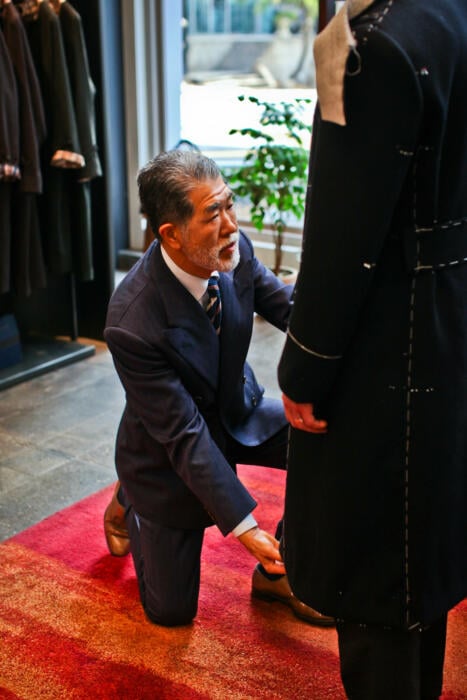
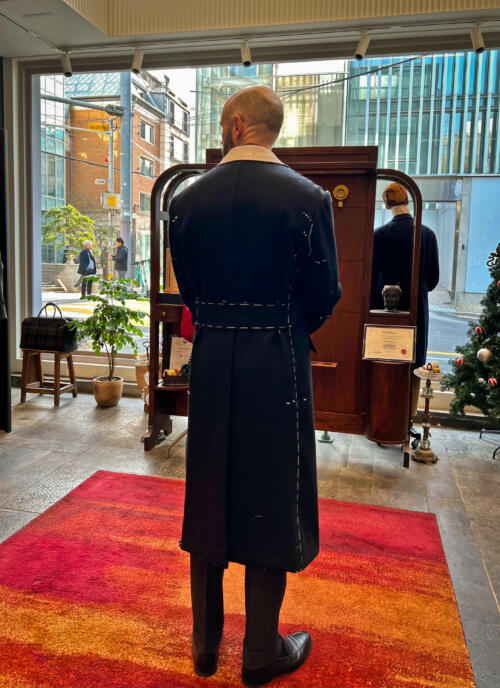
I’ve included a few pictures here of the two fittings I had in Seoul with Chad Park of B&Tailor and his father.
Both of these went very smoothly, and I particularly liked the way Chad used the yellow guide (above) to show me where the peak lapel would sit. I’ve come a cropper in the past trying to imagine that with just some faint chalk.
On the basis of this experience I can only highly recommend Chad and B&Tailor, and it’s great to put to bed issues they had in Europe in the past. I only wish they visited the UK for trunk shows (it’s currently only New York, Beijing and Singapore).
Perhaps if this goes down well enough we can convince them.
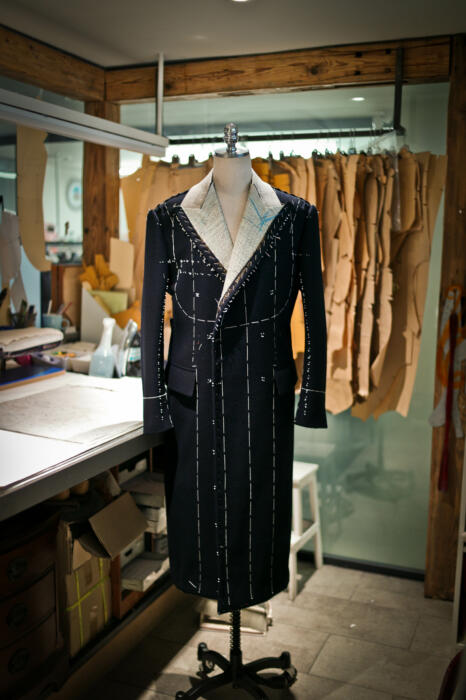
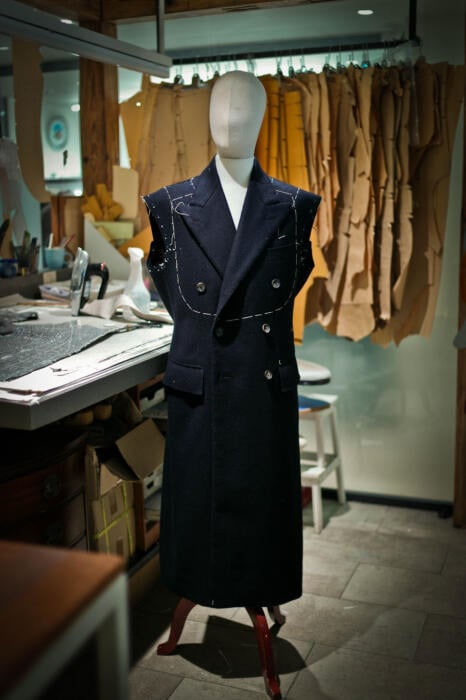
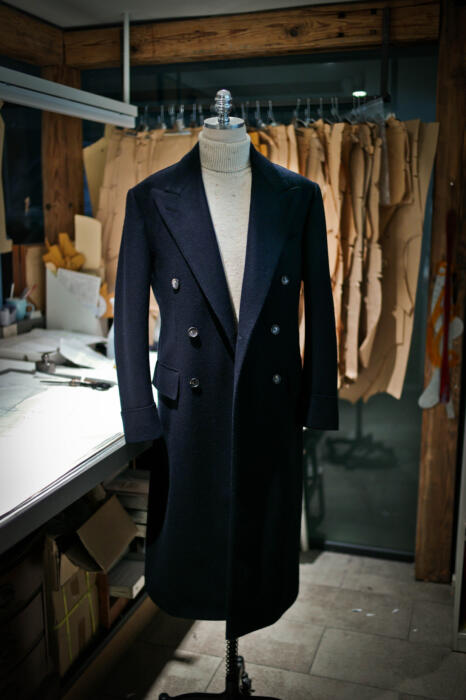
Outfit details for the checked jacket are as seen on this article. The jeans are vintage Levi’s, the knit and belt from Rubato.
Bespoke details:
- Suits start at 4,000,000 KRW (£2360) in Seoul, my coat was 5,720,000
- Abroad, prices are set by the partner retailers – in New York (Notice of Appearance), Beijing (Principle M) and Singapore (Last & Lapel).
- Bespoke suit price in New York is $3800. The coat would have been $4500
MTM details:
- Suits start at 2,800,000 KRW (£1655) in Seoul
- Abroad, prices are set by the partner retailers, as above.
- MTM suit price in New York is $2800
- Made to measure isn’t fully hand made, but is still done in Korea to the same style as the bespoke. It is also offered in the partner shops outside of trunk shows
